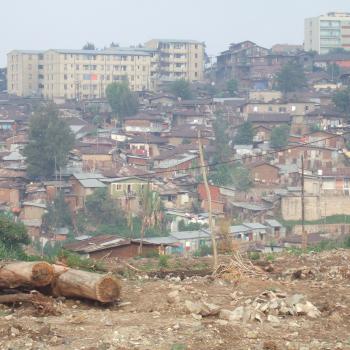
From 2006, the Ethiopian government embarked on a programme of urban redevelopment, moving people from inner-city areas to lowest cost condominium housing in the suburbs.
This Working Paper drawers on data from a longitudinal mixed-methods study that tracked adolescents before and after the move, with an eight-year interval in between, in three Young Lives sites in the capital city, Addis Ababa. It compares the views of those relocated and those who stayed behind, and the opinions of those relocated before and after their move.
The study found that condominium housing mainly benefited low- and middle-income households in transitioning to home ownership, since the poorest could not afford the deposits and monthly mortgage costs and the richest preferred to build their own houses. Overall, the move appears to have led to better housing and improved sanitation.
Nevertheless, students reported greater difficulties commuting to their schools in the first year; and the adolescents interviewed considered the schools and health centres in the condominiums to be of lower quality that those in their previous places of residence. They also felt the markets and shops to be initially less well developed and that there were fewer options for recreation.
That said, adolescents felt that the changes were mainly positive and most soon adapted to the new social environment. They appreciated the condominiums with kitchens and toilets as modern forms of housing, though social ties in the new communities tended to be weaker. They also reported improvements in the physical environment, with less pollution and fewer security risks. Girls reported having less freedom in general but this was somewhat compensated for by their better access to internet and social media.
This working paper is an output of Young Lives and the Gender and Adolescence: Global Evidence (GAGE) programme (www.odi.org.uk). An accompanying Policy Brief will be published in early April 2022.

From 2006, the Ethiopian government embarked on a programme of urban redevelopment, moving people from inner-city areas to lowest cost condominium housing in the suburbs.
This Working Paper drawers on data from a longitudinal mixed-methods study that tracked adolescents before and after the move, with an eight-year interval in between, in three Young Lives sites in the capital city, Addis Ababa. It compares the views of those relocated and those who stayed behind, and the opinions of those relocated before and after their move.
The study found that condominium housing mainly benefited low- and middle-income households in transitioning to home ownership, since the poorest could not afford the deposits and monthly mortgage costs and the richest preferred to build their own houses. Overall, the move appears to have led to better housing and improved sanitation.
Nevertheless, students reported greater difficulties commuting to their schools in the first year; and the adolescents interviewed considered the schools and health centres in the condominiums to be of lower quality that those in their previous places of residence. They also felt the markets and shops to be initially less well developed and that there were fewer options for recreation.
That said, adolescents felt that the changes were mainly positive and most soon adapted to the new social environment. They appreciated the condominiums with kitchens and toilets as modern forms of housing, though social ties in the new communities tended to be weaker. They also reported improvements in the physical environment, with less pollution and fewer security risks. Girls reported having less freedom in general but this was somewhat compensated for by their better access to internet and social media.
This working paper is an output of Young Lives and the Gender and Adolescence: Global Evidence (GAGE) programme (www.odi.org.uk). An accompanying Policy Brief will be published in early April 2022.

